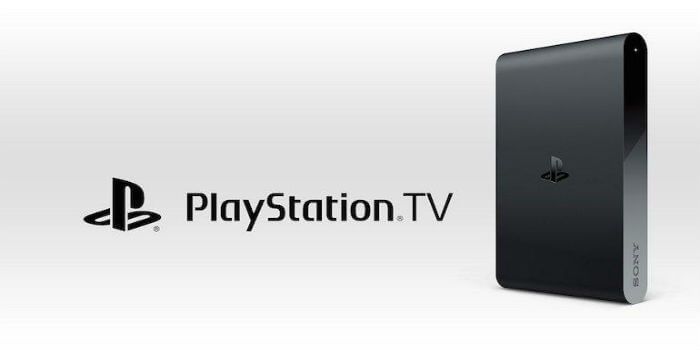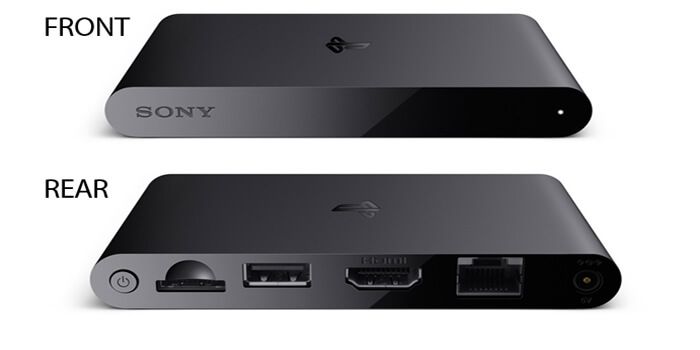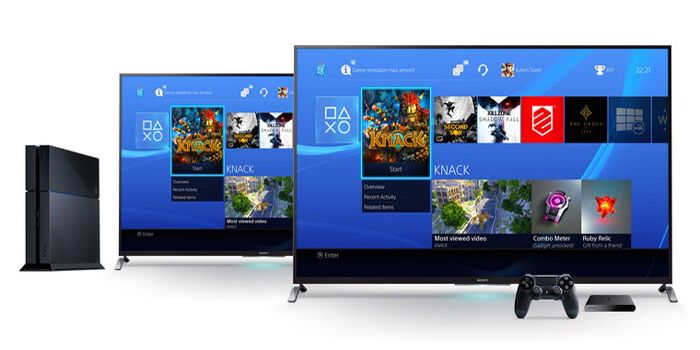The PlayStation TV is a shockingly tiny box that does a lot of things other boxes of its ilk won’t do. However, it’s also a tiny box that won’t do a lot of things that other boxes of its ilk will do. Finding a value somewhere in between those two truths is the task that Sony asks of the consumer. It asks, and then it hopes like mad that the value they arrive at is between $99 and $139. The latter is the going price for the bundle package which we have now had ample time to play with, and while early impressions were fairly negative for Sony’s minuscule machine, our findings weren’t quite so grim. The PlayStation TV won’t be for everyone, but those who do find use in it will likely be smitten with the slender system. Read on to find out why.
Hitting the initial gripes head on, it’s all about Netflix. Actually it’s about Netflix being notably absent from PSTV that had many early impressions writers all worked up. At launch, PSTV did not have Netflix, and even after a couple of small updates, it still doesn’t. The question is whether or not this is really that big of a deal. And the answer is that it isn't, or at least, it really shouldn’t be for consumers interested in PlayStation TV's core features. We get it. It’s a set-top media box. It “should” have Netflix. But with Sony positioning the PSTV as more of a secondary gaming box far more aggressively than a simple Roku-like media streamer, it can get by for now without it.
Netflix “issues” aside, there are unfortunately a few very tangible aspects of the PSTV that need some correcting. The most glaring of these is the system’s use of the Vita’s on-screen interface as its own. The layout is clearly designed for touch input and simply doesn’t translate that well to the traditional television and controller setup. It’s by no means unusable, but definitely feels clunky at times. Even though the device was originally branded as the Vita TV, it didn’t need to lift the layout completely, and it would still be nice to see it get a makeover better suited to using a controller.
Also falling under the clunky category is the workaround for inputting in-game commands that were meant for the Vita’s touch options. Using the controller’s L3 and R3 stick-clicks brings up cursors that represent the portable’s front and back touch controls. It’s not horrible, but it’s also not a very elegant solution. Most troubling though is that this functionality comes preset in the “off” position and must be toggled on in a system menu. This wouldn't be so bad if the device made any effort at all to let players know that this option existed. Users who don’t immediately find the menu option could easily become frustrated and quit a game under the assumption that they simply can’t go any further due to the lack of touch controls (as was the case while initially testing Batman: Arkham Origins Blackgate) when all it takes is a simple menu toggle click.
However, these minor snags do fade when the player lets the PSTV do what it does best, and that’s playing games. And this is what it does quite well. The three main content sources are Vita games, PlayStation Now, and PS4 remote play, giving users a multi-console, multi-generational PlayStation experience. It usually takes either some modding work and/or the use of some questionably obtained ROMs to get that kind of broad, cross-platform variety out of one machine.
Vita games can be physically loaded into a hidden slot on the side of the PSTV or digitally downloaded via PSN. With the Vita’s library continuing its slow but steady expansion into something pretty worthwhile, the overall game selection far exceeds any other microconsole out there. The other two options, PS Now and remote play, also work pretty well, but as with most streaming-based gameplay models, lag reduction can always be improved. Remotely playing a timing-intensive game like NBA 2K15 did make the small lag fluctuations more apparent, while slower-paced games seemed to perform fine. And though much has already been said about PS Now’s pricing structure, it at least performed with the same consistency as remote play and didn’t seem to run any worse than on any of the other PS Now capable devices.
The user experience of the PlayStation TV is a lot like using an Apple product. On its own, it has a handful of cool features for the casual user. But those who are heavily invested in the entire product ecosystem will be able to take advantage of everything the PSTV has to offer. Vita owners will have their existing physical and digital libraries to play, PS Plus members will get some free Vita games, and PS4 owners will have the remote play option. For many, simply being able to bring their PlayStation experience into other rooms of the house without shelling out for another PS4 will be worth the reasonable asking price. And those willing to focus on what the PlayStation TV actually does rather than get hung up on what it doesn’t do are also sure to be pleased with their new little black box.
PlayStation TV is currently available in a $99 basic package as well as a $139 bundle that includes a Dualshock 3, 8GB memory card, and download voucher for The LEGO Movie Video Game.
___
Follow Aaron on Twitter @fascistPLAGUE



